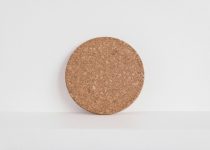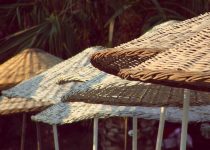Guide to Setting Up a Backyard Birdwatching Station
Are you ready to create your own backyard birdwatching station?
With this guide, you’ll learn all the essentials for setting up a space that will attract a wide variety of feathered friends.
From choosing the right bird feeders to creating a bird-friendly habitat, we’ve got you covered.
Get ready to enjoy the sights and sounds of nature right in your own backyard.
Let’s get started!
Table of Contents
Location and Layout
To ensure optimal bird viewing opportunities, carefully select the location and layout of your backyard birdwatching station. The location of your station is crucial. Choose an area that provides a clear view of the surrounding landscape, allowing you to observe birds in their natural habitat. A spot with trees or shrubs nearby can attract a variety of bird species, as they provide shelter and nesting opportunities. Consider placing your station near a water source, such as a birdbath or small pond, to attract birds that rely on water for drinking and bathing.
In terms of layout, it’s important to create a comfortable and unobtrusive space for both you and the birds. Position your station in a quiet area of your yard, away from noisy distractions like traffic or loud appliances. Arrange your seating and equipment in a way that allows for easy movement and adjustment. A comfortable chair or bench, along with a sturdy tripod for your binoculars or camera, will ensure that you can observe birds for extended periods without discomfort.
Additionally, strategically placing feeders and birdhouses around your station can attract a wider variety of birds and provide additional viewing opportunities.
Essential Birdwatching Equipment
For optimal birdwatching at your backyard station, equip yourself with essential birdwatching equipment. Here are four items you should consider having:
-
Binoculars: A good pair of binoculars is essential for getting a close-up view of birds in your backyard. Look for binoculars with a magnification of at least 7x or 8x and a wide field of view.
-
Field Guide: A field guide is a handy tool for identifying different bird species. Choose a guidebook that’s specific to your region and includes detailed illustrations or photographs.
-
Bird Feeder: Setting up a bird feeder will attract a variety of birds to your backyard. You can choose from different types of feeders, such as platform feeders, tube feeders, or suet feeders, depending on the type of birds you want to attract.
-
Bird Bath: Providing a water source like a bird bath is crucial for attracting birds to your backyard. Make sure to keep the water fresh and clean, and consider adding a dripper or mister to mimic natural water sources.
With these essential birdwatching equipment, you’ll be well-prepared to enjoy the beauty of birds right in your own backyard. Happy birdwatching!
Choosing the Right Bird Feeders
When selecting the appropriate bird feeders for your backyard station, consider the preferences of the bird species you wish to attract. Different birds have different feeding habits, so it’s important to choose feeders that cater to their needs. Here is a table that provides some guidance on the types of feeders preferred by common backyard bird species:
| Bird Species | Feeder Type |
|---|---|
| Cardinals | Platform feeders |
| Hummingbirds | Nectar feeders |
| Blue Jays | Hopper feeders |
| Goldfinches | Tube feeders |
| Woodpeckers | Suet feeders |
| Sparrows | Ground feeders |
By understanding the preferences of these bird species, you can select the right feeders to attract them to your backyard. Platform feeders are ideal for Cardinals, as they prefer to feed on flat surfaces. Hummingbirds are drawn to nectar feeders, which provide them with the sweet liquid they need. Blue Jays, on the other hand, prefer hopper feeders, which allow them to perch and feed. Goldfinches are attracted to tube feeders, which dispense small seeds that they enjoy. Woodpeckers are fond of suet feeders, which offer them high-energy food sources. Lastly, sparrows are ground feeders, so scattering food on the ground will attract them.
Creating a Bird-Friendly Habitat
To attract a diverse range of bird species to your backyard birdwatching station, focus on creating a bird-friendly habitat. By providing the right elements, you can transform your outdoor space into a sanctuary for winged visitors. Here are four essential steps to follow:
-
Plant a variety of native plants: Native plants provide birds with a source of food, shelter, and nesting materials. Choose a mix of trees, shrubs, and flowers that attract different species throughout the year. Research which plants are indigenous to your area and create a diverse landscape.
-
Provide fresh water: Birds need water for drinking and bathing. Install a birdbath or shallow dish filled with clean water. Make sure to change the water regularly to prevent it from becoming stagnant.
-
Create shelter: Birds seek out safe places to rest and hide from predators. Plant dense shrubs or trees and add birdhouses, nesting boxes, or even a brush pile for birds to find security and build their nests.
-
Reduce pesticide use: Pesticides can be harmful to birds and their food sources. Minimize the use of chemicals in your yard to ensure a healthy environment for both birds and insects.
Maintenance and Care
Keep up with the maintenance and care of your backyard birdwatching station to ensure a thriving habitat for your feathered visitors. Regular maintenance is essential to keep your bird feeders clean and filled with fresh food. Empty and clean the feeders every two weeks to prevent the growth of mold and bacteria that can be harmful to birds. Use a mild detergent and warm water to wash the feeders, and allow them to air dry completely before refilling them with birdseed.
In addition to cleaning the feeders, it’s important to maintain a clean and tidy environment in your backyard. Remove any fallen leaves, branches, or debris that could obstruct the birds’ access to the feeders or create a breeding ground for pests. Regularly check the birdbaths and water sources to make sure they’re clean and filled with fresh water. Birds need water for drinking and bathing, so it’s crucial to provide them with a clean and safe water source.
Lastly, keep an eye out for any signs of damage or wear on your birdwatching equipment. Check the feeders, birdhouses, and perches for any signs of deterioration and repair or replace them as needed. By maintaining and caring for your backyard birdwatching station, you can create a welcoming and safe environment for your feathered friends to enjoy.
Frequently Asked Questions
How Can I Attract Specific Bird Species to My Backyard Birdwatching Station?
To attract specific bird species to your backyard birdwatching station, you can provide their preferred food and water sources, create appropriate nesting areas, and offer suitable perches and shelters.
How Do I Prevent Squirrels and Other Pests From Accessing the Bird Feeders?
To prevent squirrels and other pests from getting to the bird feeders, try using squirrel-proof feeders or placing baffles on poles. You can also try using hot pepper or safflower seeds, as they are less appealing to pests.
Are There Any Specific Plants or Flowers I Should Avoid Planting in My Bird-Friendly Habitat?
When creating a bird-friendly habitat, be cautious of planting certain plants or flowers that may not be suitable for birds. Research which plants attract birds and avoid those that are toxic or harmful.
What Are Some Common Signs of Bird Illness or Disease That I Should Be Aware Of?
You should be aware of common signs of bird illness or disease. Look for things like lethargy, fluffed-up feathers, abnormal droppings, or changes in eating or drinking habits.
How Can I Encourage Birds to Nest in My Backyard Birdwatching Station?
To encourage birds to nest in your backyard birdwatching station, provide nesting materials like twigs and leaves, hang birdhouses or nesting boxes, and offer food sources like insects, berries, and seeds.



